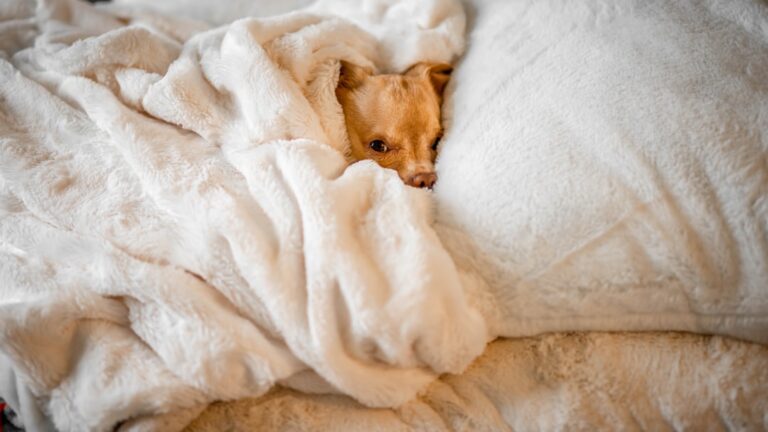Traveling with your furry friend but worried about their comfort in hotel rooms? The key to a stress-free hotel stay lies in proper crate training – your dog’s personal sanctuary away from home. Creating a familiar, safe space for your dog in unfamiliar surroundings is essential for their well-being. Whether you’re planning a weekend getaway or an extended vacation, mastering hotel crate training can transform anxious moments into peaceful stays. In this comprehensive guide, we’ll walk you through: • Selecting the perfect travel-friendly crate • Step-by-step training techniques for hotel environments • Tips for creating positive crate associations • Strategies to minimize travel anxiety • Essential do’s and don’ts for overnight stays Ready to help your four-legged companion feel at home anywhere? Let’s dive into expert-approved methods that will make hotel stays a tail-wagging experience for both you and your pet.
Selecting the Perfect Travel Crate
Types of Travel Crates
When it comes to choosing a travel crate for your furry friend, you’ll find two main options in the market. The wire crate offers excellent ventilation and visibility, making it the easiest type of crate for dogs who prefer an open view of their surroundings. These crates typically fold flat for storage and are perfect for car travel.
Plastic crates, on the other hand, provide more privacy and security, making them ideal for anxious pets. They’re also the standard choice for air travel since they meet airline regulations. These sturdy containers offer better protection from the elements and are easier to clean.
Size and Comfort Considerations
Selecting the right size is crucial for your dog’s comfort and safety during travel. Your pet should have enough room to stand up, turn around, and lie down comfortably. Measure your dog’s height, length, and width to find the perfect fit among different size options available.
Remember to add a few inches of extra space for comfort, but avoid going too large as this can make your dog feel unsafe. The crate should include a comfortable bed or padding and have proper ventilation on all sides. Consider adding familiar items like their favorite toy or blanket to create a sense of home.
Essential Pre-Hotel Training Steps
Building Positive Associations
Start your pre-hotel crate training by creating positive experiences for your dog. Place their favorite toys, treats, and a comfortable bed inside the crate to make it inviting. This initial training step is crucial for developing a strong foundation.
Begin with short sessions where you encourage your dog to explore the crate voluntarily. Toss treats near and inside the crate, allowing them to enter and exit freely. This helps them associate the crate with rewards and pleasant experiences.
Make the crate a feeding station by placing their food bowl just inside the entrance. As your dog becomes more comfortable, gradually move the bowl deeper into the crate. This consistent positive reinforcement helps establish the crate as their personal space.
Gradual Duration Training
Once your dog shows comfort entering the crate, start increasing the time they spend inside. Begin with brief 5-minute sessions while you remain visible. Use a command like “crate” or “bed” consistently when directing them inside.
Practice closing the door for short periods while offering treats through the bars. Stay nearby initially, then gradually increase your distance. This helps prevent separation anxiety and builds confidence.
Extend crate time progressively, always monitoring your dog’s behavior. If they show signs of distress, reduce the duration and build up more slowly. Remember that successful crate training requires patience and understanding of your dog’s comfort level.
Mix up training times throughout the day to help your dog adjust to different schedules. This variation prepares them for potential hotel stays where routines might differ from home. Always end sessions on a positive note with praise and rewards.

Training Adult Dogs
Adult dogs can be more challenging to crate train compared to puppies, as they may have established habits or previous negative experiences. Start by choosing a crate that’s appropriate for your adult dog’s size, allowing them enough room to stand, turn around, and lie down comfortably.
Introduce your own pup to the crate gradually, using positive reinforcement techniques. Place treats and favorite toys inside to create positive associations. Spend time sitting near the crate while your dog explores it, offering praise and encouragement.
Special Considerations for Senior Dogs
When crate training an older dog, patience is crucial. Senior dogs may have physical limitations or anxiety that require special attention. Make the crate extra comfortable with soft bedding and ensure it’s easily accessible.
Keep training sessions shorter for senior dogs, as they may tire more quickly. Consider any medical conditions that might affect their comfort in the crate. Some older dogs might need more frequent bathroom breaks, so adjust the crating schedule accordingly.
For both adult and senior dogs, maintain a consistent routine and never use the crate as punishment. This helps build trust and makes the crate a safe, welcoming space for your furry friend.
Transform your dog’s behavior with Off Leash K9 Training in North Alabama specializes in off-leash obedience, behavior modification, and strengthening the bond between dogs and their owners. Our one-on-one training sessions are designed for fast, lasting results—no matter your dog’s breed, age, or history. We believe every dog can learn, and we’re here to guide you both toward success. Call 256-998-8316 today to speak with a trainer and find the right program for your pup.


